Table of Contents
Peanut butter and jelly. Eggs and bacon. Macaroni and cheese.
You may be perplexed as to the significance of this. Don’t worry if you’re confused. There are certain things that simply naturally fit together. There will always be a perfect pair of these in our eyes, no matter how much the world changes. This is something you’ve undoubtedly done a few times already. Got a combination lunch at your favorite fast-food joint or a gift box full of random items that just worked well with each other.
To put it another way, what does any of this have to do with your business pricing strategy?
Product bundling may be seen in all of these instances.
Interested in learning more?
Let’s get started, shall we?
What is Price Bundling?
Product bundling occurs when several different products or services are packaged together and offered as a single unit at a reduced price to encourage repeat purchases.
Product bundles typically cost less than purchasing the individual products in the bundles separately.
As a typical method of increasing income per order, especially during promotional periods and around the holidays, firms employ product bundles.
Products can be packaged together as an upsell or as a cross-sell.
- Upsells– Getting the consumer to upgrade their purchase is a part of the process of doing an upsell. When a business advertises a more expensive model of a computer component, a client may consider purchasing it.
- Cross-sells – This refers to the practice of marketing items that are connected to those in a comparable category. Using the example of advertising blush with a cosmetics brush is an example of effective marketing.
Despite this, relatively few companies are successful in revealing complementary goods to promote cross-sells and upsells, despite the link between higher average order value. On desktops, 68% of sites fail to give adequate information for cross-sells featured on product detail pages, according to the Baymard Institute.
Price Bundling Examples in the Real World
Interested in seeing what bundling looks like in action?
Here are a few of our personal faves:
Credit Suisse
Credit Suisse is a financial services company that has long employed a price bundling approach to increase its portion of the customer’s disposable income.
There are many different sorts of packages available. One of these packages is referred to as the Bonviva package. Its premium pricing bundling approach, known as Bonviva, was created and developed to complement the company’s premium price approach and competitive strength.
The Bonviva package is a product pack that combines banking, insurance, and non-banking services into a single product offering. Customers with a minimum balance of about $20,000 or a minimum mortgage of $160,000 are only eligible for Credit Suisse’s Bonviva package (which is available in platinum, silver, and gold).
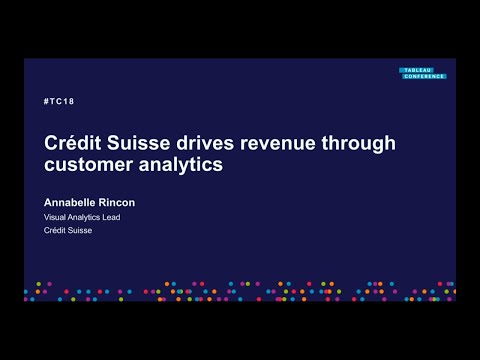
A free deposit account is included as part of the product package strategy. Reduced credit card costs by 50% in the first year of operation A complimentary debit card, as well as more favorable interest rates and commission-free traveler’s checks, are all included.
Additional benefits and services are also included as part of the package, which is a bonus. These include additional value-added items and services that are complementary to the main offer or package.
Things such as;
- a call to the emergency department (lost phones, keys, and cards)
- subscriptions to a variety of publications
- their rewards store is available to you
- a variety of discounts and deals on activities and vacation
- as well as many restaurant deals
- hotels
- a place to park your automobile
- & dining establishments
It is unquestionably true that Credit Suisse has discovered that the non-financial components of its pricing bundle approach have done remarkably effectively.
To keep current customers thrilled and amazed by new incentives and advantages, they have worked hard to ensure that new consumers are at least somewhat committed to the core product and the brand.
Credit Suisse has spent and continues to spend, a significant amount of time researching what their clients want to build the most effective price package approach possible.
Their established shortlist of packaged features and “rewards” is now available for them to use to either upsell consumers or encourage them to purchase more from them.
The firm has created alliances and arrangements, which they can then provide to clients at a low cost and get brownie points for doing so, therefore increasing their market share.
A segmentation framework is also used to categorize their clients as per their total worth now and in the future, which they may access on their website.
This guarantees that they solely concentrate on their target audiences. Their ‘good, better, best’ pricing bundling approach is informed and developed based on the facts obtained through their segmentation research and analysis.
As a result, the company continues to recruit customers of the appropriate level.
Credit Suisse has discovered that its value-based categorization and price bundling approach helps them to organically migrate consumers through the upsell/sales and cycle stages. For example, they might be exposed to more costly packages without surpassing their financial capacity.
Kylie Cosmetics
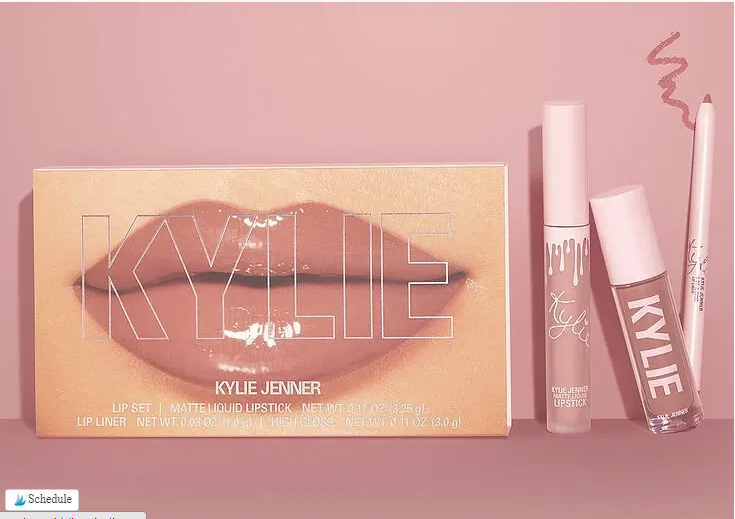
Using a basic product concept, Kylie Cosmetics became a household brand thanks to its lip kits, which are essentially lipstick and lip gloss in one convenient package. From social media darling to Shopify mega-success story, the brand expanded to be acquired for $600 million. For the time being, Kylie Cosmetics is sticking to a strategy of bundling products together and advertising the most popular bundles on their website.
Naturebox
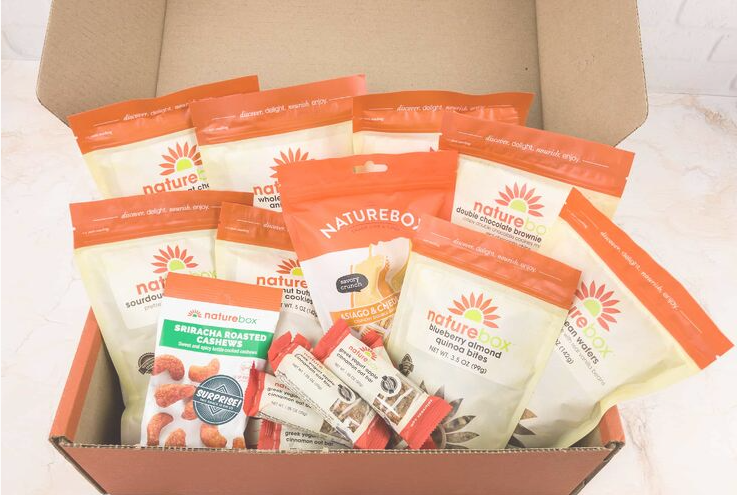
A new firm, Naturebox, distributes healthful food via the internet. To give their consumers the most bang for their buck, they frequently put a variety of foods together in one box. Naturebox bundles are a great method to promote healthy snacking if you’re a health food fanatic. For people who participate in their contests, they provide discounts and free snacks.
HelloFresh
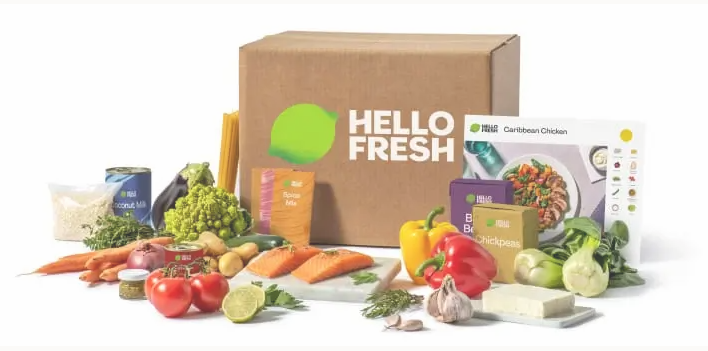
HelloFresh provides customers with the supplies they need to prepare a delicious, nutritious home-cooked dinner. Instead of seeming like an effective pure bundle technique, theirs really is. When it comes to well-balanced meals, HelloFresh is a great choice for those who are health-conscious about their diet.
Amazon
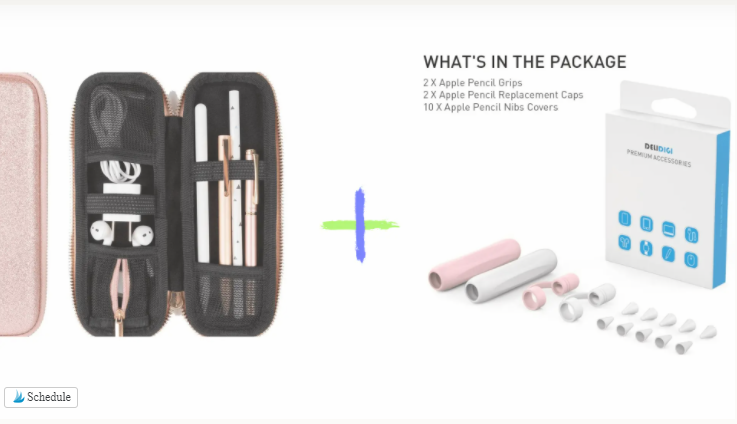
As previously stated, Amazon is constantly refining its algorithms to increase online sales. To propose combined items on their website, they’ve perfected the art of bundling (called Virtual Product Bundles). This is possible since Amazon’s revenues are derived from the sales of their vendors.
Moroccan Oil
The company sells hair care products and oils under the prestigious beauty brand name.
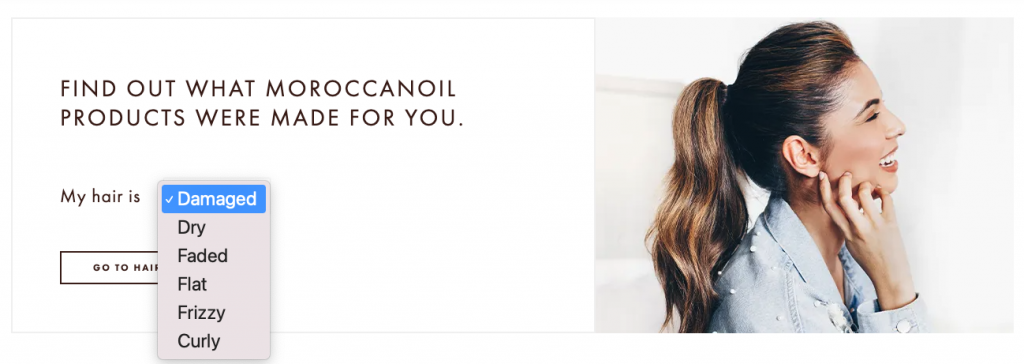
A Hair Quiz is used to give a complete hair routine from the virtual assistant experience for clients.
The suggestions are simply a set of products based on the type of hair a customer has and his or her desired results.
KitchenAid
Besides baking, the KitchenAid Stand Mixer personalization recommends additional goods as add-ons.
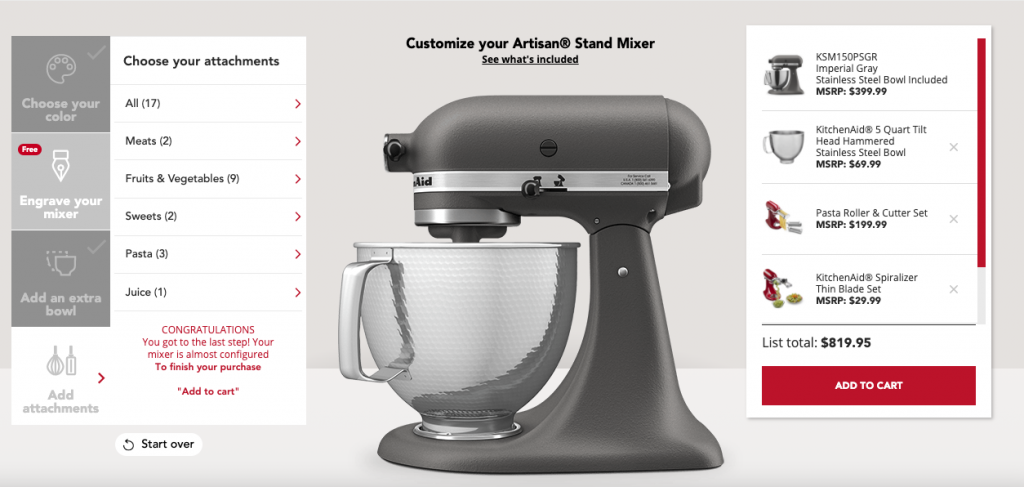
Innovative product bundle strategies like KitchenAid’s use of visual configurators are excellent examples.
Bell
This telecommunications provider understands how to offer a tailored product bundle to its customers.
You have the option of customizing your package to meet your requirements.
McDonald’s
An excellent example of price bundling is McDonald’s Happy Meals. Customers may get a burger, fries, a drink, a toy, and all of this at one low price.
Happy Meals is a good example of a product bundling strategy since customers save money by purchasing the entire box instead of the individual items separately.
A low-cost collection of products is available at McDonald’s to stimulate higher-priced sales from consumers who initially planned to purchase just one or two items.
Almost every McDonald’s lunch item is available on the menu, whether it’s french fries, beverages, or a major course like a cheeseburger (hamburgers, chicken wings, sandwiches, etc).
Here’s an example of how McDonald’s bundles their products:
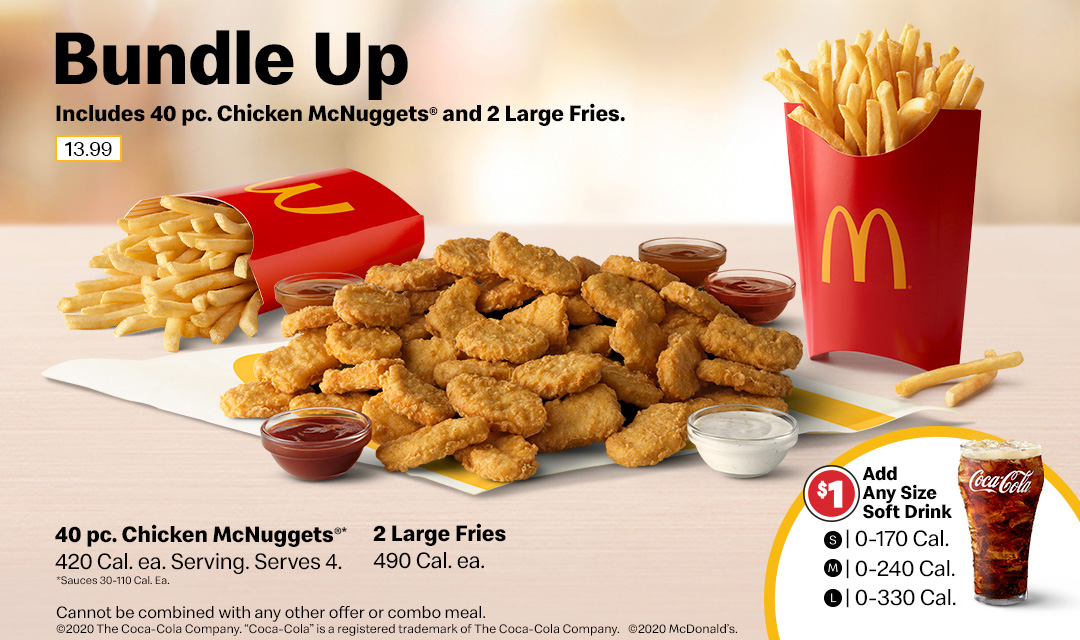
Putting their food in containers helps McDonald’s a lot. There is a rise in average order value, inventory overstock is decreased, and consumers are pleased since they got more value for their money.
Elton John
‘Farewell the Yellow Brick Road Tour’ tickets for many Elton John fans will cost considerably more than the face value. Fans are willing to spend 3-10 times as much for front-row seats if it means seeing him perform up close.
It is now possible for companies like Tickettex or Lasttix to advertise a concert package including Elton John and Eric Clapton together. Fans of Elton John would be encouraged to see Clapton as well, which would result in their spending more money!
They’d draw a greater number of people to both performances by acquiring Elton John as well.
Those may not be as eager to pay as much for Eric Clapton as Elton John, but fans who are enthusiastic enough to purchase the package and spend more money will pay more for the package than they would for individual tickets to either artist.
Customers must be prepared to pay for both components of the bundle for this offer to operate.
Even if they got the package right, and Elton John supporters didn’t care as much about Eric Clapton, they will have to offer buyers a steep discount to promote the package, resulting in significant losses.
Porshe
To show or demonstrate their price bundling method, Porsche constantly unbundles and bundles value.
Some ultra-premium consumers don’t want all the bells and whistles, as they formerly assumed. The TV entertainment system, in particular.
Porsche tested a TV entertainment system in a premium model for the 911 and Cayenne models a few years ago. There’s little doubt that their initial assumption was that everyone would want a TV in their car.
While some of their luxury clients prefer not to have a TV in their cars, they have discovered that a tiny percentage of those customers actually appreciate the car itself and the price package less when a TV is included.
The reason for this, Porsche discovered, as a result of a survey it conducted among its consumers. It turned out that people’s opinions on the TV and entertainment system differed greatly. Researchers discovered that a sizable portion of this highly selective group was completely unaware of the existence of the TV feature.
When they were presented with it, they turned it down. Customers thought the automobile was worthless when it came with a TV, according to the researchers. Many of those who did receive a top-of-the-line Porsche with a TV hardly used it.
It was determined that the value of a vehicle with or without a TV was the same across all of their customers.
Customers who appreciated the TV add-on the highest purchased SUVs, according to the research. Cayenne, Macan, and Panamera, to mention a few examples. Customers with small children, in particular, required a TV to keep them entertained on lengthy road journeys or during school pick-ups and drops.
Porsche removed the TV-for-free feature from its high-end vehicles as a result of this discovery (Carrera, 911 GT1, Turbo, etc.). On request, they’ve made it available as a stand-alone purchase. They’ve also established a new revenue source for themselves by separating the TV from the deal and re-pricing the TV package separately (at around $1000+).
Cars in premium and mid-range segments have benefited from this increase in perceived value. Because the TV’s marginal cost was presumably extremely cheap, to begin with, they have generated income that is purely additional profit.
Verizon
According to Verizon, they debated the value of bundling phone and tablet + accessories items to save money or to get an advantage over their competitors. Instead of focusing on lower prices for customers, they chose to stress convenience and enhanced gadget performance as the key benefits of bundling.
When they ran pricing experiments, they discovered that emphasizing monetary value was only effective for those who were already price-sensitive. Customers in this group were in desperate need of an incentive to make the purchase as quickly as possible. Price-sensitive customers, on the other hand, are likely to browse about the best deal (i.e., cost-focused approach).
When presented with a low-cost package, these buyers would line up many other similar-priced packages on the marketplace (Verizon and alternative). As a result, they do price comparisons before making their purchase decision. For them to come back, the lowest pricing would have to be Version’s package strategy.
To improve the way customers buy from them, Verizon chose to utilize a problem-specific price package strategy. A product price package of iPad + peripherals was designed because they understood their consumers needed it to address a specific problem, rather than concentrating on the lowest price and lowering expenses over time.
For this, they had to look at the non-price benefits their consumers would receive as well. Results and value to their consumer were both mentioned. As a result, any price-based comparisons that the client may have made before they began their purchasing journey were eliminated.
Microsoft
Microsoft has an odd strategy when it comes to software bundles. The way Microsoft markets its Office productivity suite varies greatly throughout the world. There are four programs included in the Office Suite: Word, Excel, PowerPoint, and Outlook. It’s one of the world’s most popular pieces of productivity software.
Microsoft Office applications are among the most pirated, as is the case with the majority of other well-known programs. Piracy, according to the firm, aids their business by increasing the likelihood that customers would buy a genuine edition in the future.
Microsoft, on the other hand, continues to take a tough stance against software piracy. A federal judge in March 2016 ordered Microsoft to subpoena Comcast for assistance in tracking out pirates. However, while this strategy may be effective in developed countries like the United States, it is very impossible to implement in emerging markets like China.
Aside from selling the Office Suite separately to discourage piracy, Microsoft also offers individual applications like Word and PowerPoint at a discount. This approach makes logical, but it’s counterproductive when you consider that in certain countries, buying the Office Suite is less expensive than buying Word or Excel separately.
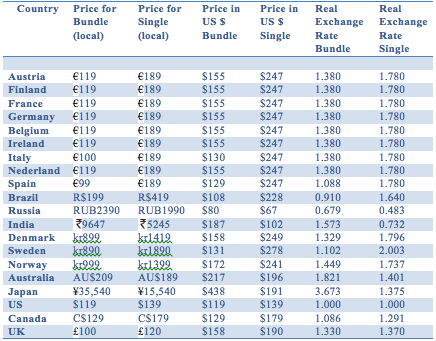
I was able to figure out the US$ value of the bundle and stand-alone using the Real Exchange Rate. This enables me to compare the prices of different versions of Microsoft Office. After that, I’ll be able to compare prices to determine if their pricing approach correlates with the country’s piracy rate.
Microsoft compels you to buy the thing they would like you to buy by setting the cost this high.
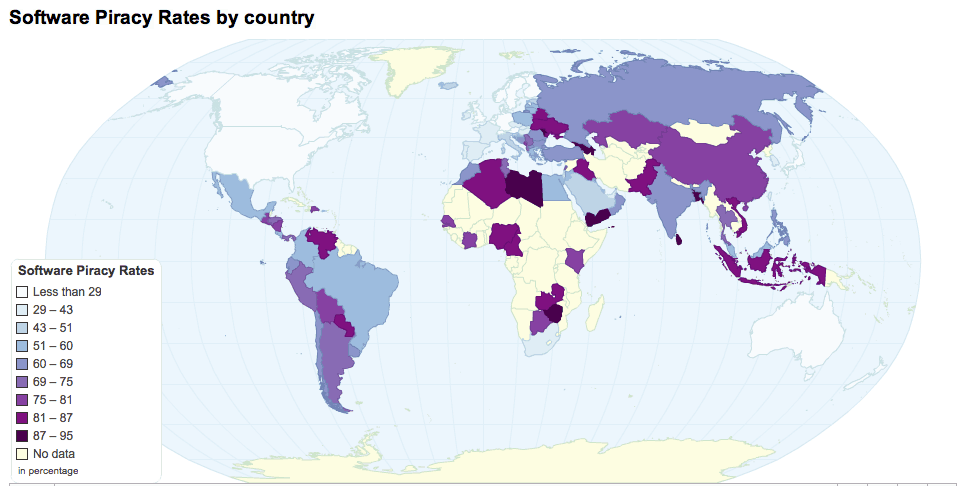
Buying a bundle rather than a single software is preferable in Eurozone nations, for example. If you’re in a country with a high piracy rate, like India or Russia, you may want to consider purchasing the standalone program instead. Russia has the most affordable Office Suite and Independent applications, while Japan has the most costly.
Key Takeaways; What is Common in Our Examples?
Don’t be scared to experiment with product bundling; there are no set rules. You can make your bundling work for your business if you follow these guidelines:
1) Use data
Understanding which goods are most commonly purchased together and which products function best when used together may be accomplished via the use of data and analysis of product performance. Bold Brain, a Shopify app, can automate this process for you!
You may develop plans for your various buyer personas by using data.
Your packages must make sense and provide value to the client. As a result, be certain that:
- Look for trends in the buying behavior of the customers.
- Analyze which goods your consumers tend to buy in bulk.
- Choose goods that complement one another based on your expertise in the industry.
2) Combine items that sell quickly and slow
If your most popular goods are bundled with your undesirable stock, the item will look to be more in demand than it really is, increasing its desirability.
Those customers who want to buy the best-selling item will be more likely to buy the package if the price is right. Sell high-ticket items with lower-ticket items if you want to make a more attractive package.
3) Ensure that inventory is up to date
Applying a single item to many bundles makes it difficult to maintain track of supply.
A surefire method to irritate your consumer is to suggest items that are truly out of stock. Keeping an eye on your inventory is critical to avoiding this situation.
Locate an inventory control system that works well with product bundling. Make certain that inventory is deducted from sales of both single and packaged products when using this method.
5) Highlight the discounts
Ascertain that you’re emphasizing any savings the consumer will receive by purchasing the goods as a set.
There’s no point in making clients do the math to find out how much they’ll save on their own. Or, even worse, you may be completely oblivious to the situation.
When displaying your bundles, cross-sells, or upsells together, any discounts must be made very apparent.
6) At the checkout, offer bundles
Packages at the checkout encourage consumers who are ready to buy to make an immediate purchase.
Ensure that the goods you recommend:
- Have a positive impact on the customer experience.
- Relevant to the items already in the shopping basket.
- Affordably priced. As an example, contemplate the impulse purchases deliberately placed at the grocery checkout.)
Ensure customers respect your advice so they’re more inclined to include it last minute if you can get them to recognize its worth.
7) Create a special packages page
To draw in clients on the lookout for a good deal, create a special bundles page with a variety of products.
You may even think about switching up your bundles from time to time, perhaps to coincide with seasonal discounts, important occasions on the calendar, or to promote a ‘bundle of the month.’
8) Get social about it
Increase your revenue by using product bundles in your social commerce strategy.
Shopify lets you designate a collection just for your bundles. Once you’ve done that, you may have them appear in their own section of your Facebook Store.
Remember to share the bundles as often as they are relevant. To give an example, you might set out time each week to announce a “bundle of the week.” Also, consider creating custom packages for certain customer profiles and then targeting them with social media advertisements.
9)Create the perfect bundle
McDonald’s does not provide a steam cleaner with a Big Mac, and neither should you. Find patterns of combined purchases in your customer profiles and sales data so that you may develop relevant and helpful packages. To avoid cheapening any products, it’s usually a good idea to group things of comparable standing together. If a $1,000 handbag comes with a $4.99 purse, for example, customers may wonder about the handbag’s quality.
10)Bring value to the table
Your package must provide clients with value in the form of convenience, price, or free delivery. The most important rule is that it can’t provide any negative value, meaning it can’t be more expensive than buying the items separately. Your reputation may suffer as a result of this, as it is sure to be unpopular.
11) Increase profit margins
Increasing the average order value is your goal when selling bundled items on Walmart, Amazon, or eBay. As a result, your bundle’s pricing needs to be competitive enough to draw in clients while yet earning a profit. The specific formula for attaining this varies depending on the product, your company, the competitors, and the marketing strategy you choose to use. The following are four effective package pricing techniques that we have observed:
Small bundle discounts
Offering a minor discount in exchange for purchasing many goods is popular for the following reasons:
- Bundles of add-on products – the sale of items from the same class as a single unit. Take, for instance, a computer, keyboard, and pointing device (mouse and keyboard).
- Cross-selling bundles — the sale of items from many categories in conjunction with one another. For instance, a laptop computer and a laptop backpack are both acceptable examples.
- Multi-buy bundles — selling similar products together. Two laptops, as an illustration.
Bundling large discounts
The practice of offering large discounts in exchange for the purchase of many goods is widespread in the following industries:
- Inventory reduction — combining a popular item with a less popular one to see if the combination works.
- Wholesale — the sale of huge quantities of merchandise for resale.
- New products — presenting new product lines and previously unheard of goods
Bundling with no discounts
Bundling has the added benefit of keeping product costs stable. The following occurs frequently when someone is selling:
- Bundles of convenience — grouping popular products only for the benefit of the client. Selling a gaming machine and controller, as an illustration.
- Bundles with exclusive access — combining products before they are sold separately. Selling a gaming system along with a new game, for instance
- Price friction bundles — combining a low-priced item with a more costly item to create price friction. Instead of charging $20 for a case, offer a pair of sunglasses plus a case for $120.
Free shipping bundling
Bundling products together to satisfy minimum purchase values may also be used to give free delivery to clients. Amazon Prime merchants, for example, can offer a $25 package to non-Prime members to qualify for free shipping.
12) Identify the appropriate grouping
If your bundle includes goods from many categories, be sure to include them under the correct category. Listing in the subcategory of the primary (or most costly) item is required on both eBay and Amazon sites.
13) Highlight and promote
If you offer products from several categories, promoting your bundle will help it stand out even more. It is possible to market the advantages of purchasing your package in the following ways:
- Adding the term “bundle” to your listing’s title and description can help it rank higher in search results.
- Using high-quality photos of the products both together and separately to improve your listing photography
- Promoting the savings through running advertising campaigns on Amazon, Walmart, and eBay
- Utilizing shipping services like Amazon Prime and Walmart 2-day delivery can expedite your shipment
14) Ensure that your shipment is flawless
And, maybe most significantly? Make sure your shipping is flawless. When selecting, packing, and delivering packaged products, mistakes are simple to make and time is lost. Maintain a happy client base with plenty of good evaluations by
Using a multi-channel delivery service with expertise completing bundle orders or optimizing your own procedures to decrease mistakes and enhance productivity.
Final Thoughts
Pricing bundling strategy considerations become easier to make after you have a clear and precise grasp of your consumer’s pain points, preferences, and willingness to pay. As an illustration, think about what services and goods to provide and how to package them together. Bundle pricing is most effective when it allows you to target a certain group of buyers with your items. Instead of promoting more market-wide purchasing activity, work towards achieving this.
